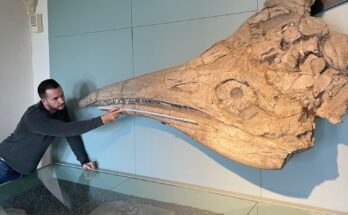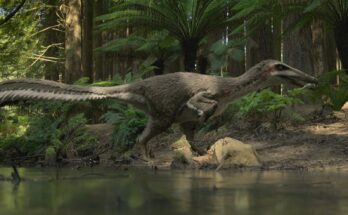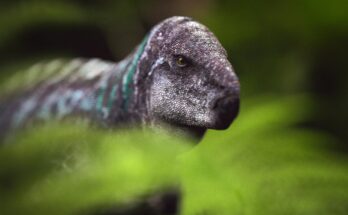Introduction
When we think of dinosaurs, we often imagine giant creatures like Tyrannosaurus or Triceratops—but not all dinosaurs were massive. Meet Morrosaurus, a small, bird-like dinosaur that thrived in one of the harshest environments on Earth: Antarctica!
This little dinosaur may not have had horns or armor, but its story is just as fascinating. In this article, we’ll explore:
✔ How and where Morrosaurus was discovered
✔ What it looked like—size, diet, and adaptations
✔ How it survived in the ancient polar wilderness
✔ Why its discovery is so important to science
Let’s journey back 70 million years to the icy world of prehistoric Antarctica!
Chapter 1: Discovery & Naming—Finding a Dinosaur in the Ice
The First Fossils (2002-2013)
- Discovered on James Ross Island, Antarctica—a remote, frozen landscape.
- Named in 2015 by Argentine paleontologists Fernando Novas and his team.
- The name Morrosaurus honors Morro, a local Antarctic geographic feature, and means “Morro lizard.”
What Was Found?
- A partial leg bone (tibia) and other fragments.
- These bones helped classify it as an “elasmarian” ornithopod—a group of small, plant-eating dinosaurs related to Iguanodon.
Fun Fact: Finding dinosaur fossils in Antarctica is extremely rare due to ice cover and harsh conditions!

Chapter 2: What Did Morrosaurus Look Like?
Size & Build
- Length: ~6.5 feet (2 meters)—about the size of a large dog.
- Weight: ~100 lbs (45 kg)—lighter than a modern kangaroo.
- Posture: Walked on two legs (bipedal) with a stiff tail for balance.
Diet & Teeth
- Herbivorous—ate ferns, mosses, and other tough prehistoric plants.
- Cheek teeth for grinding vegetation, similar to Dryosaurus.
Polar Adaptations
- Possibly had feathers or fuzz for insulation (like some small ornithopods).
- May have lived in herds for warmth and protection.
Myth Buster: Despite Antarctica’s icy reputation, 70 million years ago, it was warmer (but still cold in winter) with forests and no permanent ice caps!

Chapter 3: How Did Morrosaurus Survive in Antarctica?
The Cretaceous Antarctic Environment
- Not a frozen wasteland yet!
- Cool temperate forests (similar to southern Chile today).
- Long, dark winters—possibly forcing dinosaurs to migrate or hibernate.
Predators & Neighbors
- Potential threats: Small theropods (Imperobator) and early mammals.
- Other Antarctic dinosaurs:
- Antarctopelta (an armored ankylosaur)
- Trinisaura (another small ornithopod)
Did They Hibernate? Some scientists speculate small dinosaurs slowed their metabolism in winter, but no direct proof exists yet.

Chapter 4: Why Is Morrosaurus Important?
A Rare Antarctic Dinosaur
- One of only a few named dinosaurs from Antarctica.
- Helps scientists understand how dinosaurs adapted to polar climates.
Evolutionary Clues
- Shows that ornithopods were widespread, even in extreme environments.
- Suggests land connections between Antarctica and South America (since similar dinosaurs lived in both places).

Chapter 5: The Mystery of Its Extinction
The K-Pg Asteroid (66 Million Years Ago)
Like all non-avian dinosaurs, Morrosaurus perished in the Cretaceous mass extinction.
Could Any Have Survived?
- No evidence of polar dinosaurs outliving the extinction.
- Modern birds (descendants of small theropods) are the only survivors.
Conclusion: The Little Dinosaur That Could
Morrosaurus proves that dinosaurs weren’t just tropical giants—they thrived in cold, harsh climates too. Its discovery helps us piece together the lost world of prehistoric Antarctica, a land that was once green and teeming with life.
Final Thought: If Morrosaurus lived today, would it have evolved into a polar-adapted bird? We’ll never know—but its fossils keep the mystery alive!
Want More Tiny Dinosaur Stories?
✅ Follow for more prehistoric deep dives!
✅ Comment your favorite small dinosaur below! 🦕


